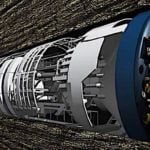Another report in the growing literature about Canada’s skilled labour problems, this one from the CIBC, reaffirms what others have been saying for some time: too few students are graduating from university and college programs that are in high demand in the work place. But the study’s authors, economists Benjamin Tal and Emanuella Enenajor, highlight the troubling reality that students don’t seem to be aware of the problem.

“And despite the overwhelming evidence that one’s field of study is the most important factor determining labour market outcomes,” they write, “today’s students have not gravitated to more financially advantageous fields in a way that reflects the changing reality of the labour market.” In a general sort of way, they concede, everyone knows that “on average, your odds to earn more are better with a degree in engineering than a degree in medieval history.” However, Canada still has a disproportionate number of graduates with degrees and diplomas in fields that are not in high demand. Worse, for the graduates, this tends to translate into lower earnings. The country now has an “excess supply of post-secondary graduates.” Compared to other developed countries, more and more of Canada’s graduates are falling behind in earnings. According to Tal, Canada has the highest proportion of graduates among the OECD countries who earn less than half of the national median income. And this is directly related to the programs they choose to study, as well as to other factors such as where they studied and whether they are male or female. Whereas the highest earning jobs continue to be in the traditional fields of medicine, law, architecture and engineering, the CIBC report finds that there has been no “clear gravitation” to these higher-paying fields. The one exception is commerce. In the past ten years, the number of students studying in commerce-related programs has grown faster than all others. Jobs in commerce, according to the CIBC report, have an earnings premium of 74 per cent, which puts them on par with health jobs. Students going into mathematics and physical sciences, areas with high earnings potential, have actually declined in numbers. The field of engineering, with the highest “earnings premium” of all at 117 per cent—the amount a person could be expected to earn in that occupation over a lifetime, compared to someone with no degree—has attracted only modest growth in enrolment over the past ten years. A recent piece in the Toronto Star on the subject included a list of Top 10 job vacancies in Canada. At the top were jobs for “managers in engineering, architecture, science and information systems. Managers in construction and transportation, as well as scientists and engineers, came before doctors and dentists and nurses and psychologists. And the Conference Board of Canada, which has been studying this problem, recently released a report saying that skilled labour shortages were already costing the Ontario economy $24 billion a year. What can be done about this? The CIBC report’s authors think we need to produce more graduates in growth areas of the economy, a reasonable position. But establishing the necessary connections between educational institutions and the workplace so that schools turn out just the right number of required chemical engineers, underwater well drillers or construction managers is not a simple thing. Countries like China and Germany have comprehensive national job strategies and educational systems correlated to job market needs. Would that work in Canada? Would Canadian students tolerate a streaming system that funneled X number of students into engineering programs and capped the numbers who could study, say, English literature? Top 10 job vacancies*
- Managers in engineering, architecture, science and information systems.
- Managers in health care, education and social services.
- Managers in construction and transportation.
- Accountants and other business service professionals.
- Scientists and engineers.
- Doctors, dentists, veterinarians and other health professionals.
- Nurses and nursing supervisors.
- Medical technologists.
- Social workers, psychologists, counsellors, probation officers.
- Supervisors in mining, oil and gas, manufacturing and processing.
*Source: Toronto Star Originally published in Condo.ca
































